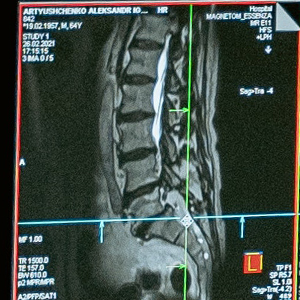Coughing, Croup and Bronchitis Resolved Under Chiropractic Care
Published in the July 2021 issue of the Asian Pacific Chiropractic Journal is the result of a case study showing the resolution of bronchitis, croup and coughing because of the introduction of chiropractic care. This case was documented from a private practice in Australiaís capital city of Canberra.
 According
to the Mayo Clinic website, "Croup refers to an infection of the
upper airway, which obstructs breathing and causes a
characteristic barking cough. The cough and other signs and
symptoms of croup are the result of swelling around the voice
box (larynx), windpipe (trachea) and bronchial tubes (bronchi)."
From the same website, the Mayo clinic describes bronchitis as,
"Bronchitis is an inflammation of the lining of your bronchial
tubes, which carry air to and from your lungs. People who have
bronchitis often cough up thickened mucus, which can be
discolored. Bronchitis may be either acute or chronic."
According
to the Mayo Clinic website, "Croup refers to an infection of the
upper airway, which obstructs breathing and causes a
characteristic barking cough. The cough and other signs and
symptoms of croup are the result of swelling around the voice
box (larynx), windpipe (trachea) and bronchial tubes (bronchi)."
From the same website, the Mayo clinic describes bronchitis as,
"Bronchitis is an inflammation of the lining of your bronchial
tubes, which carry air to and from your lungs. People who have
bronchitis often cough up thickened mucus, which can be
discolored. Bronchitis may be either acute or chronic."
This case study is about a young girl who was suffering with bronchitis, croup and coughing that began at 4 months of age. The child had suffered with intermittent coughs, croup, and bronchitis. On one occasion, the croup was severe enough to lead to a trip to the hospital.
The childís history notes that she was been born via Caesarian section at 38 weeks with no complications. However, they did report that her mother was suffering with gastroenteritis, food poisoning, and bad morning sickness while she was pregnant.
The study reports that the child was brought to a chiropractor after the mother started noticing the childís illness. The child was chiropractically examined and subluxations were shown to be present. Specific forms of chiropractic adjustments were then rendered. Chiropractic care was continued on a regular basis for this girl through the time of the writing of this case study, at which time the girl was 5 years old.
The study results show that the coughing dramatically reduced with chiropractic care to the point where the girl was able to go for a 3-and-a-half-year period with no cough at all. In addition to her main health issues, the study also noted that other common growing issues and pains were also relieved while under chiropractic care. The research study author noted that the young girl "...was almost always visibly happier and more relaxed post-treatment."
In the study discussion the author wrote, "There is limited literature on paediatric (sp for UK) cough, croup and/or bronchitis but this paper has demonstrated thatÖ (specific forms of) ÖChiropractic adjustments over time has led to an almost permanent reduction of coughing symptoms in this patient. The limited literature also suggests that Chiropractic intervention is a good care option to consider if medical intervention is ineffective. Given the excellent results from a number of limited paediatric articles, further studies are needed to see if Chiropractic Care could be a good modality to consider first when symptoms of paediatric cough, croup, bronchitis or asthma arise."
 The
John Hopkins Medical Center website notes how common this issue
is by saying, "Scoliosis is a common spine condition often found
in adolescents. Roughly 3 million new cases of the condition are
diagnosed in the United States each year, with a majority of
them identified as idiopathic scoliosis ó a type of scoliosis
that presents in children between 10 to 12 years old."
The
John Hopkins Medical Center website notes how common this issue
is by saying, "Scoliosis is a common spine condition often found
in adolescents. Roughly 3 million new cases of the condition are
diagnosed in the United States each year, with a majority of
them identified as idiopathic scoliosis ó a type of scoliosis
that presents in children between 10 to 12 years old." The
purpose of this study was to determine the prevalence of
abnormal findings associated with subluxations according to MRI
studies. Many people do not understand that subluxations are
actually a variety of spinal issues that have several components
in common. One component is that the subluxated vertebrae is
malpositioned. Another component is that there is some form of
interference to the nervous system from this malposition.
The
purpose of this study was to determine the prevalence of
abnormal findings associated with subluxations according to MRI
studies. Many people do not understand that subluxations are
actually a variety of spinal issues that have several components
in common. One component is that the subluxated vertebrae is
malpositioned. Another component is that there is some form of
interference to the nervous system from this malposition.  Pain
is common with Parkinsonís Disease because the disease causes
stiffness and changes in gait and movement. The study reports
that Parkinsonís patients with tremors, rigidity, gait
difficulty, and postural instability have a higher frequency and
severity of musculoskeletal pain.
Pain
is common with Parkinsonís Disease because the disease causes
stiffness and changes in gait and movement. The study reports
that Parkinsonís patients with tremors, rigidity, gait
difficulty, and postural instability have a higher frequency and
severity of musculoskeletal pain.